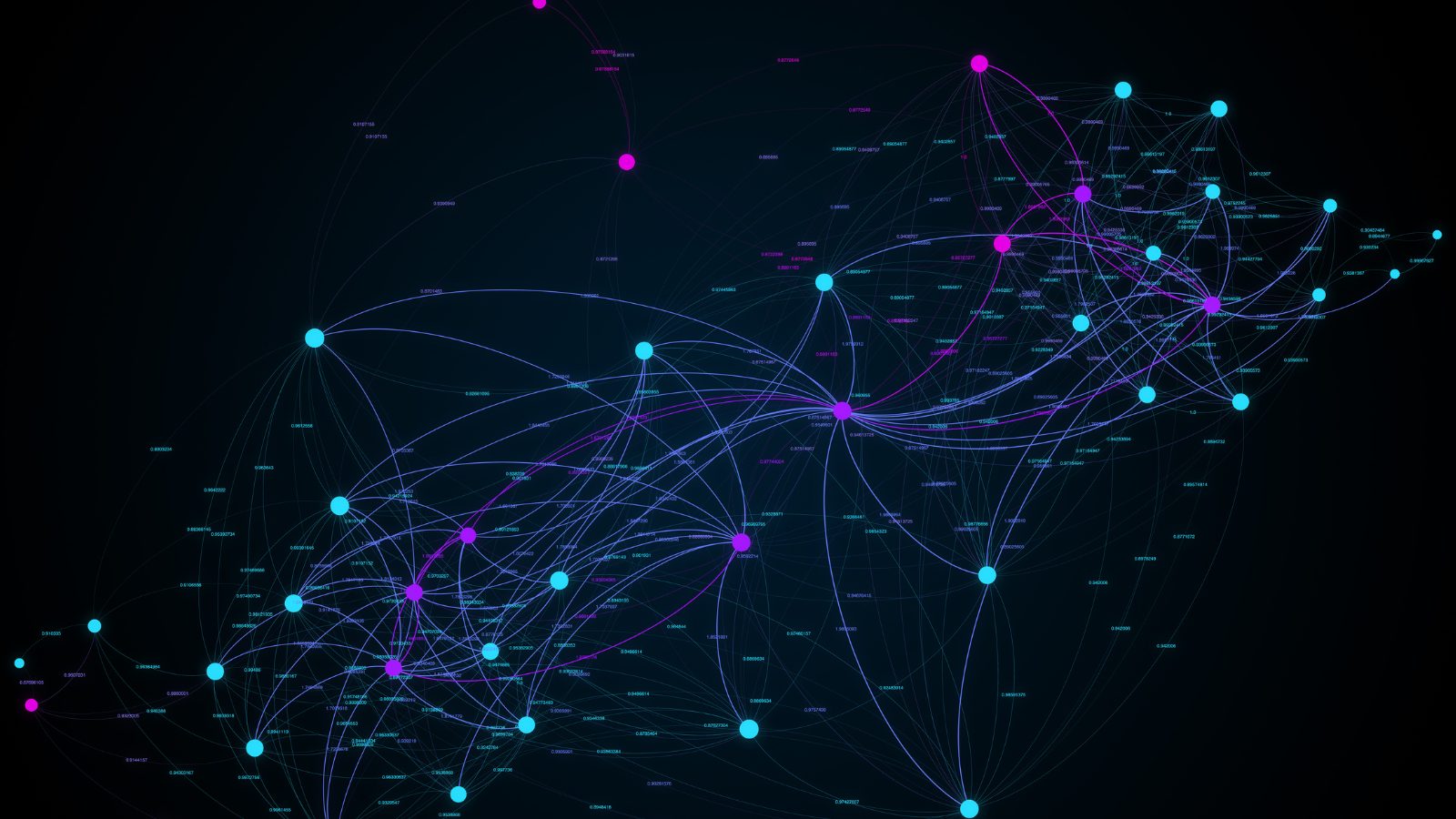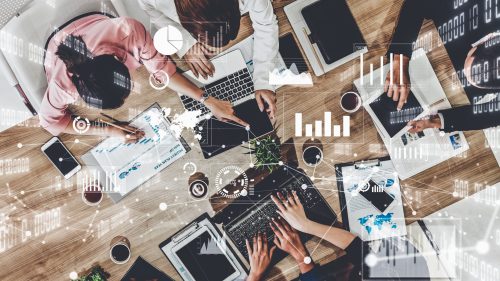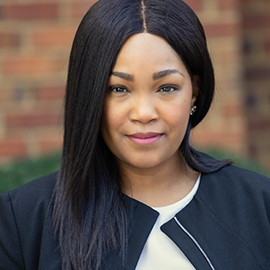 Over the past 50 years enterprise risk management (ERM) has become increasingly important for leaders (McShane, 2018). Organizational leaders and their boards realized the need for risk communication, a public relations specialty, to support this work (Reckelhoff-Dangel & Peterson, 2007). Recent examples that support this call-to-action include the COVID-19 pandemic, social justice movements, national security issues, geopolitical events, international financial systems collapse, legal issues, and cybersecurity breaches. In leading organizations, crisis and risk communication professionals work hand-in-hand. A successful ERM practice helps prevent crises from occurring. On the other hand, if the risk becomes a reality, crisis communicators are there to help raise awareness about what happened, why, and what the organization will do to correct it. Like effective crisis communication, risk communication should be as transparent as possible and infused with empathy (Xie et al., 2021). ERM communicators and leaders can apply the following framework across sectors. Risk Typology Before exploring this framework, risk typology must be discussed. One must prepare for all challenges – no matter how conceivably improbable. If it can happen, it will, and the organization needs to be able to communicate about it. Here are the types of risk to monitor for:Competition/Sector Risk states that competitors and an organization’s respective sector constantly evolve, creating inherent possibility for peril.Legal/Regulatory Risk recognizes that changes in laws and regulatory compliance can impact one’s organization.Organizationally-Owned Risk comprises issues the organization may face from its own operations, management and leadership that include upset stakeholders; fraud, financial mismanagement and impropriety; cybersecurity breaches; reputational damage; and poor product/service delivery and quality.Social Responsibility Risk includes emergent social movements and changes that impact society and how the organization responds.Enterprise Risk Management Communication Framework Effective risk management requires risk identification, risk analysis, risk response, and risk monitoring. This framework allows organizations to plan accordingly for risk and know how to respond to it. It is important to note that risk management differs from issues management in that risk management involves what could occur and how to prevent it, whereas issues management requires a response to stop an issue before it festers into a crisis (Compton, Wigley & Samoilenko, 2021). Risk Identification requires spotting risks that could affect one’s organization. Methods to do so include situation and SWOT analyses, environmental scanning, and competition/sector comparison (Schober, 2016). The ERM team, comprising stakeholders from throughout the organization, conducts this process. This teamwork helps to ensure that there are no blind spots with risks falling between organizational silos (Fra. Paleo, 2015). During risk identification the team should appoint a “Devil’s Advocate” to speak to why something could be a risk if others on the team do not think it could be. Remember – anything goes. Risk Analysis and Impact requires the ERM team to chart how likely a risk is to occur. Part of this process requires working with stakeholders to gain insights regarding how they perceive the risk (Hoover et al., 2021). The risk communicator can conduct this primary research through quantitative research, such as surveys and questionnaires, and qualitative research including focus groups and interviews. The team assigns scores to each perceived risk – the highest score indicates the risk most likely to occur. After the ERM team scores the perceived risk, they assess the organizational impact (Soltanizadeh et al., 2016). Risk Response involves how the organization will act on a risk once it becomes reality (Lee, Meyer and Bradlow, 2009). Again, understanding how stakeholders want an organization to respond is essential. The risk communication professional crafts internal and external messages to disseminate to stakeholders regarding what occurred and how the organization will respond to the risk. Often, the crisis communication team will help formulate and coordinate risk response. Risk Monitoring requires watching potential risks and gauging how these perceived threats change (Hopkin, 2013). These shifts require ongoing evaluation to the risks’ scores and how to respond to them. Enterprise Risk Management Team Development is essential to help ensure that the organization is ready to address risk and communicate to stakeholders regarding it. Leading practice is to convene the team monthly to assess risk and modify their portfolio after evaluation. The ERM team also should act as part of twice-a-year crisis communication and emergency preparedness training led by an external facilitator. ERM, emergency preparedness and crisis communication plans should fold seamlessly into one another with team members’ duties explicitly assigned. The facilitator conducts a debriefing after the meeting to determine what went well and what improvements the organization can make. Conclusion At the end of the day, ERM communication should advance organizational outcomes (Nair et al., 2015). One should not conduct risk communication simply for communication’s sake. An added benefit is that this practice allows communication professionals to sit at the policy and decision-making table, boosting their importance within the organization. References Compton, Josh, Shelley Wigley, and Sergei A. Samoilenko. “Inoculation Theory and Public Relations.” Public relations review 47.5 (2021): 102116–. Web. Fra.Paleo, Urbano. Risk Governance The Articulation of Hazard, Politics and Ecology. Ed. Urbano. Fra.Paleo. 1st ed. 2015. Dordrecht: Springer Netherlands, 2015. Web. Hoover, Anna G. et al. “Balancing Incomplete COVID-19 Evidence and Local Priorities: Risk Communication and Stakeholder Engagement Strategies for School Re-Opening.” Reviews on environmental health 36.1 (2021): 27–37. Web. Hopkin, Paul. Risk Management. 1st edition. Philadelphia, PA: Kogan Page Ltd, 2013. Print. Lee, Ka Lok, Robert J Meyer, and Eric T Bradlow. “Analyzing Risk Response Dynamics on the Web: The Case of Hurricane Katrina.” Risk analysis 29.12 (2009): 1779–1792. Web. McShane, Michael. “Enterprise Risk Management: History and a Design Science Proposal.” The journal of risk finance19.2 (2018): 137–153. Web. Nair, Anil et al. “Enterprise Risk Management as a Dynamic Capability: A Test of Its Effectiveness During a Crisis.” Managerial and decision economics 35.8 (2014): 555–566. Web. Reckelhoff-Dangel, Christine, and Dan Petersen. Risk Communication in Action : the Risk Communication Workbook. Cincinnati, OH: United States Environmental Protection Agency, Office of Research and Development, National Risk Management Research Laboratory, 2007. Print. Schober, Madrean. “Role and Practice Development.” Introduction to Advanced Nursing Practice. Cham: Springer International Publishing, 2016. 95–109. Web. Soltanizadeh, Sara et al. “Business Strategy, Enterprise Risk Management and Organizational Performance.” Management research review 39.9 (2016): 1016–1033. Web. Xie, Chaowu et al. “The Effects of Risk Message Frames on Post-Pandemic Travel Intentions: The Moderation of Empathy and Perceived Waiting Time.” Current issues in tourism 24.23 (2021): 3387–3406. Web.
Over the past 50 years enterprise risk management (ERM) has become increasingly important for leaders (McShane, 2018). Organizational leaders and their boards realized the need for risk communication, a public relations specialty, to support this work (Reckelhoff-Dangel & Peterson, 2007). Recent examples that support this call-to-action include the COVID-19 pandemic, social justice movements, national security issues, geopolitical events, international financial systems collapse, legal issues, and cybersecurity breaches. In leading organizations, crisis and risk communication professionals work hand-in-hand. A successful ERM practice helps prevent crises from occurring. On the other hand, if the risk becomes a reality, crisis communicators are there to help raise awareness about what happened, why, and what the organization will do to correct it. Like effective crisis communication, risk communication should be as transparent as possible and infused with empathy (Xie et al., 2021). ERM communicators and leaders can apply the following framework across sectors. Risk Typology Before exploring this framework, risk typology must be discussed. One must prepare for all challenges – no matter how conceivably improbable. If it can happen, it will, and the organization needs to be able to communicate about it. Here are the types of risk to monitor for:Competition/Sector Risk states that competitors and an organization’s respective sector constantly evolve, creating inherent possibility for peril.Legal/Regulatory Risk recognizes that changes in laws and regulatory compliance can impact one’s organization.Organizationally-Owned Risk comprises issues the organization may face from its own operations, management and leadership that include upset stakeholders; fraud, financial mismanagement and impropriety; cybersecurity breaches; reputational damage; and poor product/service delivery and quality.Social Responsibility Risk includes emergent social movements and changes that impact society and how the organization responds.Enterprise Risk Management Communication Framework Effective risk management requires risk identification, risk analysis, risk response, and risk monitoring. This framework allows organizations to plan accordingly for risk and know how to respond to it. It is important to note that risk management differs from issues management in that risk management involves what could occur and how to prevent it, whereas issues management requires a response to stop an issue before it festers into a crisis (Compton, Wigley & Samoilenko, 2021). Risk Identification requires spotting risks that could affect one’s organization. Methods to do so include situation and SWOT analyses, environmental scanning, and competition/sector comparison (Schober, 2016). The ERM team, comprising stakeholders from throughout the organization, conducts this process. This teamwork helps to ensure that there are no blind spots with risks falling between organizational silos (Fra. Paleo, 2015). During risk identification the team should appoint a “Devil’s Advocate” to speak to why something could be a risk if others on the team do not think it could be. Remember – anything goes. Risk Analysis and Impact requires the ERM team to chart how likely a risk is to occur. Part of this process requires working with stakeholders to gain insights regarding how they perceive the risk (Hoover et al., 2021). The risk communicator can conduct this primary research through quantitative research, such as surveys and questionnaires, and qualitative research including focus groups and interviews. The team assigns scores to each perceived risk – the highest score indicates the risk most likely to occur. After the ERM team scores the perceived risk, they assess the organizational impact (Soltanizadeh et al., 2016). Risk Response involves how the organization will act on a risk once it becomes reality (Lee, Meyer and Bradlow, 2009). Again, understanding how stakeholders want an organization to respond is essential. The risk communication professional crafts internal and external messages to disseminate to stakeholders regarding what occurred and how the organization will respond to the risk. Often, the crisis communication team will help formulate and coordinate risk response. Risk Monitoring requires watching potential risks and gauging how these perceived threats change (Hopkin, 2013). These shifts require ongoing evaluation to the risks’ scores and how to respond to them. Enterprise Risk Management Team Development is essential to help ensure that the organization is ready to address risk and communicate to stakeholders regarding it. Leading practice is to convene the team monthly to assess risk and modify their portfolio after evaluation. The ERM team also should act as part of twice-a-year crisis communication and emergency preparedness training led by an external facilitator. ERM, emergency preparedness and crisis communication plans should fold seamlessly into one another with team members’ duties explicitly assigned. The facilitator conducts a debriefing after the meeting to determine what went well and what improvements the organization can make. Conclusion At the end of the day, ERM communication should advance organizational outcomes (Nair et al., 2015). One should not conduct risk communication simply for communication’s sake. An added benefit is that this practice allows communication professionals to sit at the policy and decision-making table, boosting their importance within the organization. References Compton, Josh, Shelley Wigley, and Sergei A. Samoilenko. “Inoculation Theory and Public Relations.” Public relations review 47.5 (2021): 102116–. Web. Fra.Paleo, Urbano. Risk Governance The Articulation of Hazard, Politics and Ecology. Ed. Urbano. Fra.Paleo. 1st ed. 2015. Dordrecht: Springer Netherlands, 2015. Web. Hoover, Anna G. et al. “Balancing Incomplete COVID-19 Evidence and Local Priorities: Risk Communication and Stakeholder Engagement Strategies for School Re-Opening.” Reviews on environmental health 36.1 (2021): 27–37. Web. Hopkin, Paul. Risk Management. 1st edition. Philadelphia, PA: Kogan Page Ltd, 2013. Print. Lee, Ka Lok, Robert J Meyer, and Eric T Bradlow. “Analyzing Risk Response Dynamics on the Web: The Case of Hurricane Katrina.” Risk analysis 29.12 (2009): 1779–1792. Web. McShane, Michael. “Enterprise Risk Management: History and a Design Science Proposal.” The journal of risk finance19.2 (2018): 137–153. Web. Nair, Anil et al. “Enterprise Risk Management as a Dynamic Capability: A Test of Its Effectiveness During a Crisis.” Managerial and decision economics 35.8 (2014): 555–566. Web. Reckelhoff-Dangel, Christine, and Dan Petersen. Risk Communication in Action : the Risk Communication Workbook. Cincinnati, OH: United States Environmental Protection Agency, Office of Research and Development, National Risk Management Research Laboratory, 2007. Print. Schober, Madrean. “Role and Practice Development.” Introduction to Advanced Nursing Practice. Cham: Springer International Publishing, 2016. 95–109. Web. Soltanizadeh, Sara et al. “Business Strategy, Enterprise Risk Management and Organizational Performance.” Management research review 39.9 (2016): 1016–1033. Web. Xie, Chaowu et al. “The Effects of Risk Message Frames on Post-Pandemic Travel Intentions: The Moderation of Empathy and Perceived Waiting Time.” Current issues in tourism 24.23 (2021): 3387–3406. Web.
 Matt Charles, DPA, APR, teaches Crisis Communications for the Georgetown University School of Continuing Studies Master’s in Public Relations and Corporate Communications program and is President & Founder of Matt Charles Public Relations+Strategy and a Fulbright. Matt previously served as deputy spokesperson for the University of Virginia and director of media relations for the UVA Darden School of Business. Connect with Matt on LinkedIn: https://www.linkedin.com/in/matt-charles-dpa-apr-6563571/.
...
Matt Charles, DPA, APR, teaches Crisis Communications for the Georgetown University School of Continuing Studies Master’s in Public Relations and Corporate Communications program and is President & Founder of Matt Charles Public Relations+Strategy and a Fulbright. Matt previously served as deputy spokesperson for the University of Virginia and director of media relations for the UVA Darden School of Business. Connect with Matt on LinkedIn: https://www.linkedin.com/in/matt-charles-dpa-apr-6563571/.
...
Read More...

 Stagwell examined how Americans feel when companies speak out on social issues.A survey was conducted Feb. 10-12, 2023.Key findings include:1.) 38% of Americans said they thought that American companies are speaking out too much on social issues (up 6 points from July 2022).— 37% of respondents said companies are speaking out the right amount (down 3 points from July 2022), while 25% said they aren’t speaking out enough (down 3 points).2.) 68% of Americans said they think that when companies voice their opinion on a social issue it’s a marketing ploy (up 12 points from July 2022).— When companies are speaking out on social issues, 71% of Americans agree that a company’s history on social issues is important.3.) 59% of Americans said that there is generally more risk to a CEO speaking out on social issues (up 5 points from April 2022) than reward (41%).— Democrats (55%) are more likely to believe there is more reward in a CEO speaking out than Republicans (33%).Find the original report here.
...
Stagwell examined how Americans feel when companies speak out on social issues.A survey was conducted Feb. 10-12, 2023.Key findings include:1.) 38% of Americans said they thought that American companies are speaking out too much on social issues (up 6 points from July 2022).— 37% of respondents said companies are speaking out the right amount (down 3 points from July 2022), while 25% said they aren’t speaking out enough (down 3 points).2.) 68% of Americans said they think that when companies voice their opinion on a social issue it’s a marketing ploy (up 12 points from July 2022).— When companies are speaking out on social issues, 71% of Americans agree that a company’s history on social issues is important.3.) 59% of Americans said that there is generally more risk to a CEO speaking out on social issues (up 5 points from April 2022) than reward (41%).— Democrats (55%) are more likely to believe there is more reward in a CEO speaking out than Republicans (33%).Find the original report here.
... 
 Matt Charles, DPA, APR, teaches Crisis Communications for the Georgetown University School of Continuing Studies Master’s in Public Relations and Corporate Communications program and is President & Founder of Matt Charles Public Relations+Strategy and a Fulbright. Matt previously served as deputy spokesperson for the University of Virginia and director of media relations for the UVA Darden School of Business. Connect with Matt on LinkedIn: https://www.linkedin.com/in/matt-charles-dpa-apr-6563571/.
...
Matt Charles, DPA, APR, teaches Crisis Communications for the Georgetown University School of Continuing Studies Master’s in Public Relations and Corporate Communications program and is President & Founder of Matt Charles Public Relations+Strategy and a Fulbright. Matt previously served as deputy spokesperson for the University of Virginia and director of media relations for the UVA Darden School of Business. Connect with Matt on LinkedIn: https://www.linkedin.com/in/matt-charles-dpa-apr-6563571/.
... 


 PwC examined how CEOs feel about the future of business in the 26th Annual Global CEO Survey.A survey of 4,410 CEOs in 105 countries and territories was conducted from October – November of 2022. A series of in-depth interviews with CEOs were also conducted.Key findings include:1.) Nearly 40% of CEOs across all industries said they think their company will no longer be economically viable a decade from now if it continues on its current path.2.) CEOs said the top challenges to profitability in their industry are changing customer demands/preferences (56%), changes in regulations (53%), and labor skills/shortages (52%).3.) CEOs said they expect a moderate, large, or very large impact on their cost profiles (50%) and their supply chains (42%) from climate change in the next 12 months.— CEOs in China feel particularly exposed, with 65% seeing the potential for impact in their cost profiles, 71% in supply chains, and 56% in physical assets.4.) 53% of CEOs said they feel “very confident” or “extremely confident” in their company’s prospects for revenue growth in the next three years, an 11 percentage point drop from the previous year.Find the original report here.
...
PwC examined how CEOs feel about the future of business in the 26th Annual Global CEO Survey.A survey of 4,410 CEOs in 105 countries and territories was conducted from October – November of 2022. A series of in-depth interviews with CEOs were also conducted.Key findings include:1.) Nearly 40% of CEOs across all industries said they think their company will no longer be economically viable a decade from now if it continues on its current path.2.) CEOs said the top challenges to profitability in their industry are changing customer demands/preferences (56%), changes in regulations (53%), and labor skills/shortages (52%).3.) CEOs said they expect a moderate, large, or very large impact on their cost profiles (50%) and their supply chains (42%) from climate change in the next 12 months.— CEOs in China feel particularly exposed, with 65% seeing the potential for impact in their cost profiles, 71% in supply chains, and 56% in physical assets.4.) 53% of CEOs said they feel “very confident” or “extremely confident” in their company’s prospects for revenue growth in the next three years, an 11 percentage point drop from the previous year.Find the original report here.
... 
 On Jan. 25, 2023, Gallup Poll released the results of its annual Q12 survey, which measures and tracks employee engagement from 50 countries. The 2022 Q12 survey results depict a grim reality for US employers. The survey found that employee engagement in the US has decreased significantly since 2020, marking the first annual decline in a decade. This decrease in engagement was particularly notable among young, female, and remote-ready on-site employees (Harter, 2023).
Employee engagement has been a buzzword in organizational management for the past 30 years. In recent years, organizational and internal communication scholars have also placed a significant emphasis on the importance of employee engagement, linking effective leadership, symmetrical employee communication, and positive employee-organization relationship qualities with employee engagement.
Organizational psychology scholars generally agree that employee engagement means an activated, passionate, and motivated psychological state of employee that drives discretionary effort, that is, willingness to give extra effort. Engaged employees demonstrate a high level of participation in work-related activities that are typically outside their formal job responsibilities. They are employees who volunteer for a committee, stay after hours to complete unfinished tasks, show up at organization-sponsored events outside of work hours, and enjoy spending time with colleagues outside work.
According to Gallup, the most significant decline in employee engagement since its pre-pandemic record high in 2019 to 2022 was observed in the areas of clarity of work expectations, connection to the organization’s mission or purpose, opportunities for learning and growth, opportunities to utilize one’s strengths, and feeling valued and supported at work.
Gallup’s employee engagement questions, aka Q12, measure employee responses on topics ranging from a clear understanding of role expectations at work, organizational and interpersonal support for work, professional growth, autonomy, and value fulfillment.
While Gallup Q12 is called the employee engagement scale, it does not measure employee engagement. Instead, it is a scale that measures workplace environment and leadership qualities that might predict employee engagement (See the full Q12 scale here). So, the 2022 Gallup Q12 survey findings indicate that US employers fail to drive employee engagement, particularly in the abovementioned areas.
In 2022, US media outlets reported on a phenomenon called quiet quitting, which gained widespread attention after trending on social media. Quiet quitting describes an employee attitude that rejects “the idea that work should be at the central focus of their life…. the expectations of giving their all or putting in extra hours (Zenger & Folkman, 2022, para 1). By definition, quiet quitting is the opposite of employee engagement, as it describes the refusal to exert discretionary efforts beyond what is outlined in the job description.
Quiet quitting is nothing new, as the media have made it out to be. In their Harvard Business Review article, Zenger and Folkman (2022) called quiet quitting a new name for an old behavior.While organizations lament the emergence of quiet quitting behaviors in their workforce, scholars point out that quitting is often a response to an unsupportive work environment and unsustainable expectations. For example, using data from their 360-degree leadership assessments gathered since 2020 on 2,801 managers, Zenger and Folkman (2022) analyzed the drivers of quiet quitting behaviors among employees, focusing on two factors: the manager’s ability to balance achieving results with concern for others’ needs, and work environment. They found that ineffective managers were three or four times more likely to have quiet quitters in their teams.
The reality of the emerging workforce is that the majority of Gen X, Millennials, and Gen Z employees view quiet quitting as drawing healthy work-life boundaries. In other words, the so-called “quiet quitting” is here to stay. So, what can organizations do to increase employee engagement? Can employee engagement be sustainable? If quiet quitting is a response to an unsupportive workplace and unrealistic expectations for employees to be always ON at work, perhaps the answers to these questions are somewhere from conducting work environment audits, listening to employees, and setting the right role expectations appropriate for the compensation, respecting employees’ need to disconnect from work to recharge, and encouraging a healthy work-life balance.
In conclusion, to sustain employee engagement, organizations must adapt to the changing attitudes of the emerging workforce, particularly among Gen Z and Millennial employees. This includes reevaluating traditional engagement strategies, such as recognitions and rewards, and redefining engagement in the context of organizational characteristics.
References:
Harter, J. (2023, January 25). U.S. employee engagement needs a rebound in 2023. Gallup. https://www.gallup.com/workplace/468233/employee-engagement-needs-rebound-2023.aspx?utm_source=google&utm_medium=rss&utm_campaign=syndication
Zenger, J. & Folkman, J. (2022, August 31). Quiet quitting is about bad bosses, not bad employees. Harvard Business Review. https://hbr.org/2022/08/quiet-quitting-is-about-bad-bosses-not-bad-employees
On Jan. 25, 2023, Gallup Poll released the results of its annual Q12 survey, which measures and tracks employee engagement from 50 countries. The 2022 Q12 survey results depict a grim reality for US employers. The survey found that employee engagement in the US has decreased significantly since 2020, marking the first annual decline in a decade. This decrease in engagement was particularly notable among young, female, and remote-ready on-site employees (Harter, 2023).
Employee engagement has been a buzzword in organizational management for the past 30 years. In recent years, organizational and internal communication scholars have also placed a significant emphasis on the importance of employee engagement, linking effective leadership, symmetrical employee communication, and positive employee-organization relationship qualities with employee engagement.
Organizational psychology scholars generally agree that employee engagement means an activated, passionate, and motivated psychological state of employee that drives discretionary effort, that is, willingness to give extra effort. Engaged employees demonstrate a high level of participation in work-related activities that are typically outside their formal job responsibilities. They are employees who volunteer for a committee, stay after hours to complete unfinished tasks, show up at organization-sponsored events outside of work hours, and enjoy spending time with colleagues outside work.
According to Gallup, the most significant decline in employee engagement since its pre-pandemic record high in 2019 to 2022 was observed in the areas of clarity of work expectations, connection to the organization’s mission or purpose, opportunities for learning and growth, opportunities to utilize one’s strengths, and feeling valued and supported at work.
Gallup’s employee engagement questions, aka Q12, measure employee responses on topics ranging from a clear understanding of role expectations at work, organizational and interpersonal support for work, professional growth, autonomy, and value fulfillment.
While Gallup Q12 is called the employee engagement scale, it does not measure employee engagement. Instead, it is a scale that measures workplace environment and leadership qualities that might predict employee engagement (See the full Q12 scale here). So, the 2022 Gallup Q12 survey findings indicate that US employers fail to drive employee engagement, particularly in the abovementioned areas.
In 2022, US media outlets reported on a phenomenon called quiet quitting, which gained widespread attention after trending on social media. Quiet quitting describes an employee attitude that rejects “the idea that work should be at the central focus of their life…. the expectations of giving their all or putting in extra hours (Zenger & Folkman, 2022, para 1). By definition, quiet quitting is the opposite of employee engagement, as it describes the refusal to exert discretionary efforts beyond what is outlined in the job description.
Quiet quitting is nothing new, as the media have made it out to be. In their Harvard Business Review article, Zenger and Folkman (2022) called quiet quitting a new name for an old behavior.While organizations lament the emergence of quiet quitting behaviors in their workforce, scholars point out that quitting is often a response to an unsupportive work environment and unsustainable expectations. For example, using data from their 360-degree leadership assessments gathered since 2020 on 2,801 managers, Zenger and Folkman (2022) analyzed the drivers of quiet quitting behaviors among employees, focusing on two factors: the manager’s ability to balance achieving results with concern for others’ needs, and work environment. They found that ineffective managers were three or four times more likely to have quiet quitters in their teams.
The reality of the emerging workforce is that the majority of Gen X, Millennials, and Gen Z employees view quiet quitting as drawing healthy work-life boundaries. In other words, the so-called “quiet quitting” is here to stay. So, what can organizations do to increase employee engagement? Can employee engagement be sustainable? If quiet quitting is a response to an unsupportive workplace and unrealistic expectations for employees to be always ON at work, perhaps the answers to these questions are somewhere from conducting work environment audits, listening to employees, and setting the right role expectations appropriate for the compensation, respecting employees’ need to disconnect from work to recharge, and encouraging a healthy work-life balance.
In conclusion, to sustain employee engagement, organizations must adapt to the changing attitudes of the emerging workforce, particularly among Gen Z and Millennial employees. This includes reevaluating traditional engagement strategies, such as recognitions and rewards, and redefining engagement in the context of organizational characteristics.
References:
Harter, J. (2023, January 25). U.S. employee engagement needs a rebound in 2023. Gallup. https://www.gallup.com/workplace/468233/employee-engagement-needs-rebound-2023.aspx?utm_source=google&utm_medium=rss&utm_campaign=syndication
Zenger, J. & Folkman, J. (2022, August 31). Quiet quitting is about bad bosses, not bad employees. Harvard Business Review. https://hbr.org/2022/08/quiet-quitting-is-about-bad-bosses-not-bad-employees
 Minjeong Kang, Ph.D. (Mass Communication, Syracuse University) is an associate professor in The Media School at Indiana University, where she teaches public relations and internal communication management courses. Kang’s primary research has been centered on understanding engagement in various organizational stakeholder contexts such as volunteers, employees, consumers, etc. Kang’s research has received several national and international recognitions such as Emerald Publishing’s Literati Award of Excellence for Highly Commended for her 2017 publication in Journal of Communication Management, Gallup Korea’s Outstanding Research Award for her 2019 publication in Journal of Public Relations Research, and 2009 Ketchum Excellence in Public Relations Research Award by Institute of Public Relation for her research proposal on blog credibility.
...
Minjeong Kang, Ph.D. (Mass Communication, Syracuse University) is an associate professor in The Media School at Indiana University, where she teaches public relations and internal communication management courses. Kang’s primary research has been centered on understanding engagement in various organizational stakeholder contexts such as volunteers, employees, consumers, etc. Kang’s research has received several national and international recognitions such as Emerald Publishing’s Literati Award of Excellence for Highly Commended for her 2017 publication in Journal of Communication Management, Gallup Korea’s Outstanding Research Award for her 2019 publication in Journal of Public Relations Research, and 2009 Ketchum Excellence in Public Relations Research Award by Institute of Public Relation for her research proposal on blog credibility.
... 
 Members of the IPR Measurement Commission gathered virtually to discuss new and innovative approaches to measurement. IPR Measurement Commission member Sarah Myles, Director of Communications Measurement & Insights at McDonald’s, moderated the discussion. Participants discussed how PR professionals can measure earned media to maximize value for their organizations. Key themes from the discussion include: — In terms of new approaches to measurement in communication, there is a movement toward understanding outcomes as opposed to just measuring output. —- Outcomes are the behavioral result of an organizational output. Outputs are the actions an organization takes to achieve a certain goal (BMC).— Aligning measurement objectives will help organizations measure what is meaningful for their decision-making. — Measurement experts said an overwhelming quantity of data was a consistent problem, as it makes it difficult for organizations to analyze and apply data.— Companies often have “too many tools” that are misused or not used at all. — Regarding the issue of data quantity, pushing the data together into one streamlined channel is not the solution: storytelling is. —- Half of measurement is the actual data; the other half is being able to break that information down into a message that is understandable for the audience. — Organizations can benefit from having designated measurement “ambassadors” to put the data into words for people outside of research teams.—- The goal is to make all the decision-makers of a company more data literate, increasing acumen and understanding.— Qualitative research and measurements are underutilized. They are very valuable in understanding what stakeholders want from an organization.— For the future of communications measurement, the experts said they believe that media will be a much less important player in understanding organizational outcomes in the future.— Developments with the Metaverse and AI are bound to impact measurement and professionals are still considering what this means for the future of the industry.
...
Members of the IPR Measurement Commission gathered virtually to discuss new and innovative approaches to measurement. IPR Measurement Commission member Sarah Myles, Director of Communications Measurement & Insights at McDonald’s, moderated the discussion. Participants discussed how PR professionals can measure earned media to maximize value for their organizations. Key themes from the discussion include: — In terms of new approaches to measurement in communication, there is a movement toward understanding outcomes as opposed to just measuring output. —- Outcomes are the behavioral result of an organizational output. Outputs are the actions an organization takes to achieve a certain goal (BMC).— Aligning measurement objectives will help organizations measure what is meaningful for their decision-making. — Measurement experts said an overwhelming quantity of data was a consistent problem, as it makes it difficult for organizations to analyze and apply data.— Companies often have “too many tools” that are misused or not used at all. — Regarding the issue of data quantity, pushing the data together into one streamlined channel is not the solution: storytelling is. —- Half of measurement is the actual data; the other half is being able to break that information down into a message that is understandable for the audience. — Organizations can benefit from having designated measurement “ambassadors” to put the data into words for people outside of research teams.—- The goal is to make all the decision-makers of a company more data literate, increasing acumen and understanding.— Qualitative research and measurements are underutilized. They are very valuable in understanding what stakeholders want from an organization.— For the future of communications measurement, the experts said they believe that media will be a much less important player in understanding organizational outcomes in the future.— Developments with the Metaverse and AI are bound to impact measurement and professionals are still considering what this means for the future of the industry.
... 
 This blog is provided by the IPR Center for Diversity, Equity, and Inclusion.“Diversity fatigue” is a phenomenon that has garnered increased attention in recent years, particularly within academic and corporate settings. A research study by Jessi L. Smith and her colleagues defined diversity fatigue as “variation in the extent to which someone experiences a diminished response to or desensitization toward diversity efforts.” Their study offers a more nuanced definition and distinguishes between those who are and who are not on the front lines of diversity, equity, and inclusion (DEI) work. However, at its core, DEI fatigue refers to the emotional and psychological exhaustion individuals may experience when engaging in DEI-related activities or initiatives. This fatigue can manifest in a variety of ways, including feelings of burnout, frustration, and resentment. It is experienced by both those who may feel there is too much emphasis on DEI and those who feel responsible for driving DEI efforts forward.Multiple factors can contribute to DEI fatigue. One is the prevalence of microaggressions and other forms of discrimination within many organizations. Microaggressions are defined by Oxford Languages as indirect, subtle, or unintentional discrimination against members of a marginalized group. These experiences can be emotionally draining and may make individuals feel their efforts to promote DEI are unappreciated, unwelcomed, and futile. Additionally, these initiatives may place a disproportionate burden on those who identify as underrepresented or tasked with DEI work to educate their colleagues or advocate for their own inclusion constantly.Another factor that can contribute to DEI fatigue is the constant need or request to engage in difficult conversations about race, gender, disability, and other forms of diversity. According to a review on racial microaggressions research, these conversations can be emotionally taxing and may leave individuals feeling drained and overwhelmed. Furthermore, there may be a lack of institutional support for DEI efforts, which can further add to the sense of frustration and burnout individuals may experience, as noted in a Forbes article by Shelley Willingham.Broader societal factors can also contribute to DEI fatigue. For example, the ongoing prevalence of discrimination and prejudice within society can make it feel like DEI efforts aren’t working, as these issues are deeply entrenched and may seem insurmountable. Additionally, the pervasive nature of negative news, disinformation, and social media content related to DEI can lead to feelings of despair, overwhelm, and depression.For those who view DEI initiatives as “too much, too soon,” and are experiencing feelings of resentment toward the recent increase in discussion and efforts, the study by Smith and her colleagues attributes this resistance to a state experience known as system-justifying beliefs. System-justifying beliefs posit that the world is fair and good things happen to good people, so the blame is placed on the people rather than the system. They perceive discussion and/or ridicule of the system as ridicule of them; therefore, it becomes harder to understand or fully agree to the need for systemic change.Despite these challenges, it is important to recognize that DEI fatigue is a real and valid concern that should be addressed, and organizations should take steps to move forward. One way is to provide support and resources for individuals without judgment. This might include providing access to training, mentorship, and other forms of professional development, as well as creating a culture that values true inclusion.Another important step is to ensure DEI initiatives are inclusive and equitable. This means actively seeking input and participation from underrepresented individuals and ensuring their voices are heard and respected. It also means being mindful of the burden DEI efforts may place on certain individuals and making sure support is provided to ensure that these efforts are sustainable.Finally, it is important to recognize that DEI efforts are not one-time events or quick fixes. Instead, they require ongoing commitment, dedication, resources, and measurement/evaluation of efforts. This means being prepared for setbacks and challenges and being willing to continue the work of promoting DEI even when it is difficult. Leaders must be willing to listen to those who are experiencing DEI fatigue and who may be in a state of resentment. This also provides an opportunity to test the organization’s commitment to its DEI goals.In conclusion, DEI fatigue is a real and valid concern that can have serious consequences for individuals and organizations. Dr. Carolyn Thomas, Provost, California State University, Fullerton, said in her recent appearance on the Race in the PR Classroom series hosted by the Institute for Public Relations and PRSA Educators Academy that, “[Diversity] includes bursts of passion that we make space for,” which means that fatigue will happen, and DEI work is not a short-term commitment. By providing support and resources, ensuring that DEI initiatives are inclusive and equitable, and committing to ongoing efforts, organizations and individuals can work to mitigate the effects of DEI fatigue and promote a more diverse and inclusive society for all.
This blog is provided by the IPR Center for Diversity, Equity, and Inclusion.“Diversity fatigue” is a phenomenon that has garnered increased attention in recent years, particularly within academic and corporate settings. A research study by Jessi L. Smith and her colleagues defined diversity fatigue as “variation in the extent to which someone experiences a diminished response to or desensitization toward diversity efforts.” Their study offers a more nuanced definition and distinguishes between those who are and who are not on the front lines of diversity, equity, and inclusion (DEI) work. However, at its core, DEI fatigue refers to the emotional and psychological exhaustion individuals may experience when engaging in DEI-related activities or initiatives. This fatigue can manifest in a variety of ways, including feelings of burnout, frustration, and resentment. It is experienced by both those who may feel there is too much emphasis on DEI and those who feel responsible for driving DEI efforts forward.Multiple factors can contribute to DEI fatigue. One is the prevalence of microaggressions and other forms of discrimination within many organizations. Microaggressions are defined by Oxford Languages as indirect, subtle, or unintentional discrimination against members of a marginalized group. These experiences can be emotionally draining and may make individuals feel their efforts to promote DEI are unappreciated, unwelcomed, and futile. Additionally, these initiatives may place a disproportionate burden on those who identify as underrepresented or tasked with DEI work to educate their colleagues or advocate for their own inclusion constantly.Another factor that can contribute to DEI fatigue is the constant need or request to engage in difficult conversations about race, gender, disability, and other forms of diversity. According to a review on racial microaggressions research, these conversations can be emotionally taxing and may leave individuals feeling drained and overwhelmed. Furthermore, there may be a lack of institutional support for DEI efforts, which can further add to the sense of frustration and burnout individuals may experience, as noted in a Forbes article by Shelley Willingham.Broader societal factors can also contribute to DEI fatigue. For example, the ongoing prevalence of discrimination and prejudice within society can make it feel like DEI efforts aren’t working, as these issues are deeply entrenched and may seem insurmountable. Additionally, the pervasive nature of negative news, disinformation, and social media content related to DEI can lead to feelings of despair, overwhelm, and depression.For those who view DEI initiatives as “too much, too soon,” and are experiencing feelings of resentment toward the recent increase in discussion and efforts, the study by Smith and her colleagues attributes this resistance to a state experience known as system-justifying beliefs. System-justifying beliefs posit that the world is fair and good things happen to good people, so the blame is placed on the people rather than the system. They perceive discussion and/or ridicule of the system as ridicule of them; therefore, it becomes harder to understand or fully agree to the need for systemic change.Despite these challenges, it is important to recognize that DEI fatigue is a real and valid concern that should be addressed, and organizations should take steps to move forward. One way is to provide support and resources for individuals without judgment. This might include providing access to training, mentorship, and other forms of professional development, as well as creating a culture that values true inclusion.Another important step is to ensure DEI initiatives are inclusive and equitable. This means actively seeking input and participation from underrepresented individuals and ensuring their voices are heard and respected. It also means being mindful of the burden DEI efforts may place on certain individuals and making sure support is provided to ensure that these efforts are sustainable.Finally, it is important to recognize that DEI efforts are not one-time events or quick fixes. Instead, they require ongoing commitment, dedication, resources, and measurement/evaluation of efforts. This means being prepared for setbacks and challenges and being willing to continue the work of promoting DEI even when it is difficult. Leaders must be willing to listen to those who are experiencing DEI fatigue and who may be in a state of resentment. This also provides an opportunity to test the organization’s commitment to its DEI goals.In conclusion, DEI fatigue is a real and valid concern that can have serious consequences for individuals and organizations. Dr. Carolyn Thomas, Provost, California State University, Fullerton, said in her recent appearance on the Race in the PR Classroom series hosted by the Institute for Public Relations and PRSA Educators Academy that, “[Diversity] includes bursts of passion that we make space for,” which means that fatigue will happen, and DEI work is not a short-term commitment. By providing support and resources, ensuring that DEI initiatives are inclusive and equitable, and committing to ongoing efforts, organizations and individuals can work to mitigate the effects of DEI fatigue and promote a more diverse and inclusive society for all.
 Anetra Henry is the senior director for strategic initiatives at the Institute for Public Relations.
...
Anetra Henry is the senior director for strategic initiatives at the Institute for Public Relations.
... 
 As the incoming Chair of the IPR Board of Trustees, Yanique Woodall, looks to the future and shares what research priorities and upcoming programs IPR will focus on in 2023. It’s hard to believe we’re one full month into the new year. As communicators in our fast-paced, deadline-driven, and constantly evolving environments, time seems to move faster than the speed of light!As I reflect on 2022, I am incredibly grateful for the work IPR continues to contribute to the industry, and I am honored to continue to serve on the Executive Committee for the Board of Trustees. In the summer of 2017, a dear colleague, Stacey Tank, referred me to IPR, as she knew I truly valued the research behind our communications work. It’s been a rewarding experience since day one, and I continue to be amazed by the discussions and decisions made by fellow communications colleagues stemming from IPR’s research initiatives. IPR has such an influence on today’s most pressing and important topics for communications professionals.As I embark on 2023 as the new IPR Chair, I am looking forward to continuing to work with Tina (McCorkindale), Stacey (Jones), the newly appointed vice-chair Diana (Littman), the newly appointed treasurer Brett (Ludwig) and the phenomenal Board of Trustees to accelerate further IPR’s mission and commission breakthrough research that helps facilitate the most important discussion topics critical to today’s business operations. Most of all, I would like to thank Steve (Cody), our outgoing immediate past chair, for his leadership, dedication, and steadfast commitment to IPR and the industry. He has truly made remarkable contributions to our industry (and, plus anyone that spends time with him is guaranteed to have an enlightening and fulfilling discussion!).When I think about our goals for this year, I hope our industry can count on IPR for the following: valuable information that influences our most important decisions, professional development for tomorrow’s leaders, networking, and building a sense of community and peer-to-peer learning.Here are a few highlights that come to mind:— Peer-to-peer learning: IPR is offering its highly regarded IPR Master Class series with courses focused on employee engagement, change management, and combatting disinformation, as well as its cornerstone course, Strategic Playbook for Communicators.— Professional development for tomorrow’s leaders: We are seeking membership applications for IPR ELEVATE, a leadership community of 25 to 40 high-performing innovators and catalysts for growth, change, and advancement who support the mission and insights-focused work of IPR.— Valuable information that influences our most important decisions: IPR anticipates having its strongest research year yet with studies focused on employee engagement and mental health, disability in the workplace (a partnership with Voya Financial), the annual disinformation in society study, the relationship between Chief Communication Officers and Chief Diversity Officers, and climate change, among others.— Networking and building a sense of community: IPR is hosting its annual IPR Bridge Conference from March 22-23 at Georgetown University in Washington D.C. This event brings together the academy and the practice to share the latest in research and discuss the most critical and forward-looking issues impacting the field. A key feature of the conference is the opportunity to network and interact with top leaders in an intimate setting.Our industry continues to thrive, in large part due to the significant contribution of IPR over the years. I am looking forward to working with all of you—and I wish you the very best in 2023!Cheers!-Yanique
As the incoming Chair of the IPR Board of Trustees, Yanique Woodall, looks to the future and shares what research priorities and upcoming programs IPR will focus on in 2023. It’s hard to believe we’re one full month into the new year. As communicators in our fast-paced, deadline-driven, and constantly evolving environments, time seems to move faster than the speed of light!As I reflect on 2022, I am incredibly grateful for the work IPR continues to contribute to the industry, and I am honored to continue to serve on the Executive Committee for the Board of Trustees. In the summer of 2017, a dear colleague, Stacey Tank, referred me to IPR, as she knew I truly valued the research behind our communications work. It’s been a rewarding experience since day one, and I continue to be amazed by the discussions and decisions made by fellow communications colleagues stemming from IPR’s research initiatives. IPR has such an influence on today’s most pressing and important topics for communications professionals.As I embark on 2023 as the new IPR Chair, I am looking forward to continuing to work with Tina (McCorkindale), Stacey (Jones), the newly appointed vice-chair Diana (Littman), the newly appointed treasurer Brett (Ludwig) and the phenomenal Board of Trustees to accelerate further IPR’s mission and commission breakthrough research that helps facilitate the most important discussion topics critical to today’s business operations. Most of all, I would like to thank Steve (Cody), our outgoing immediate past chair, for his leadership, dedication, and steadfast commitment to IPR and the industry. He has truly made remarkable contributions to our industry (and, plus anyone that spends time with him is guaranteed to have an enlightening and fulfilling discussion!).When I think about our goals for this year, I hope our industry can count on IPR for the following: valuable information that influences our most important decisions, professional development for tomorrow’s leaders, networking, and building a sense of community and peer-to-peer learning.Here are a few highlights that come to mind:— Peer-to-peer learning: IPR is offering its highly regarded IPR Master Class series with courses focused on employee engagement, change management, and combatting disinformation, as well as its cornerstone course, Strategic Playbook for Communicators.— Professional development for tomorrow’s leaders: We are seeking membership applications for IPR ELEVATE, a leadership community of 25 to 40 high-performing innovators and catalysts for growth, change, and advancement who support the mission and insights-focused work of IPR.— Valuable information that influences our most important decisions: IPR anticipates having its strongest research year yet with studies focused on employee engagement and mental health, disability in the workplace (a partnership with Voya Financial), the annual disinformation in society study, the relationship between Chief Communication Officers and Chief Diversity Officers, and climate change, among others.— Networking and building a sense of community: IPR is hosting its annual IPR Bridge Conference from March 22-23 at Georgetown University in Washington D.C. This event brings together the academy and the practice to share the latest in research and discuss the most critical and forward-looking issues impacting the field. A key feature of the conference is the opportunity to network and interact with top leaders in an intimate setting.Our industry continues to thrive, in large part due to the significant contribution of IPR over the years. I am looking forward to working with all of you—and I wish you the very best in 2023!Cheers!-Yanique
 Yanique Woodall is Vice President of Communications and Customer Experience at CVS Health. She is Chair of the IPR Board of Trustees. Read Yanique’s full bio here!
...
Yanique Woodall is Vice President of Communications and Customer Experience at CVS Health. She is Chair of the IPR Board of Trustees. Read Yanique’s full bio here!
...